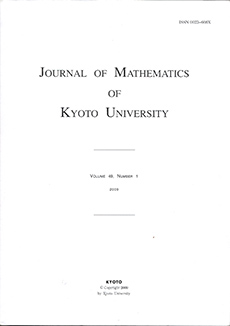We consider the spatial isosceles three-body problem where two masses are equal and the other may be different. We discuss free-fall orbits in the planar case and show that there exists a countable family of orbits converging to triple collisions forward and backward in time. In Devaney's coordinates, the orbits correspond to topologically transverse heteroclinic orbits between equilibria on the collision manifold in the blown-up equations (Theorem 1.1). By the "window theory" of Moeckel [SIAM J. Math. Anal., 15 (1984), 857-876], we see that there exists an orbit shadowing a prescribed path on the graph consisting of these new heteroclinic orbits and already known, heteroclinic and periodic orbits. In particular, choosing appropriate infinite paths, we obtain a variety of new oscillatory orbits.
J. Math. Kyoto Univ.
49(4):
735-746
(2009).
DOI: 10.1215/kjm/1265899480





